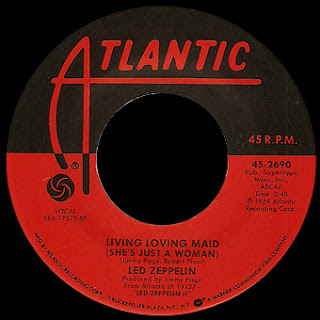Because of this, I cancelled my plans on doing a Huey Lewis tune as our Friday Flipside feature in deference to a rock ‘n roll number that speaks of a blue moon – a “Blue Moon of Kentucky” if you will. I know, I could have used “Blue Moon” by Marcels, but that was an “A” side and not a flip.
While Elvis also covered the Rogers and Hart composition, today we feature his take on Bill Monroe’s classic 1946 bluegrass number. The song was the “B” side to Elvis’ first single, “That’s All Right.” It is said that bassist Bill Black started slapping his bass and imitated Bill Monroe’s high (read nasal) tenor part on “Blue Moon of Kentucky.” Elvis and guitarist Scotty Moore joined in the singing.
Stories vary on who inspired the change of tempo and time signature of Monroe’s classic tune – but both agree that it was someone connected with Sun Records. Owner/producer Sam Phillips and artist Charlie Feathers are both credited with changing the slow tempo ¾ time waltz to an up tempo 4/4 rocker. Elvis, Scotty, and Bill recorded their different version in July 1954.
Although neither song on this single was a national hit, it was said that regionally "Blue Moon of Kentucky" had greater popularity than the single's "A" side. Enjoy the blue moon and “Blue Moon of Kentucky.”
Bill Monroe’s Bluegrass Boys’ Original
The song reminds me of one time I sat in with a bluegrass band playing mandolin as a substitute for a college class presentation. Note, I don’t play bluegrass style, but have a great admiration and appreciation for bluegrass mandolinists. The guitarist asked me if I knew “Blue Moon of Kentucky” which I grunted an affirmative response and proceeded to kick off the Elvis 4/4 version . . . I was into two bars of the song when they stopped me and showed me the real way to play the song.At that point, I had never heard Bill Monroe’s version – I never appreciated his vocal abilities, but I loved his playing – he did some really strange things with the mandolin by not always having both strings in a course tuned to the same note. On occasion, he used a D tuning that utilized the following: F#A DD AA AD. Mandolins are normally tuned GG DD AA EE.
I also was not keen on what he did to his prized 1924 Gibson Lloyd Loar F-5 mandolin when he got mad at Gibson. He gouged out their name on the headstock which devalued the instrument greatly. Eventually, Gibson and Monroe patched things up and the company offered to fix the headstock for free. So, all was not lost.
Note, Lester Flatt and Earl Scruggs both were members of the Bluegrass Boys and played on this recording. After Elvis recorded his version, Monroe recorded another version and upped the tempo.
I plan to end this blog on September 26, 2012. If you would like to see it continue after that, let me know by registering your feelings in the survey found at http://tinyurl.com/8juv863.












































